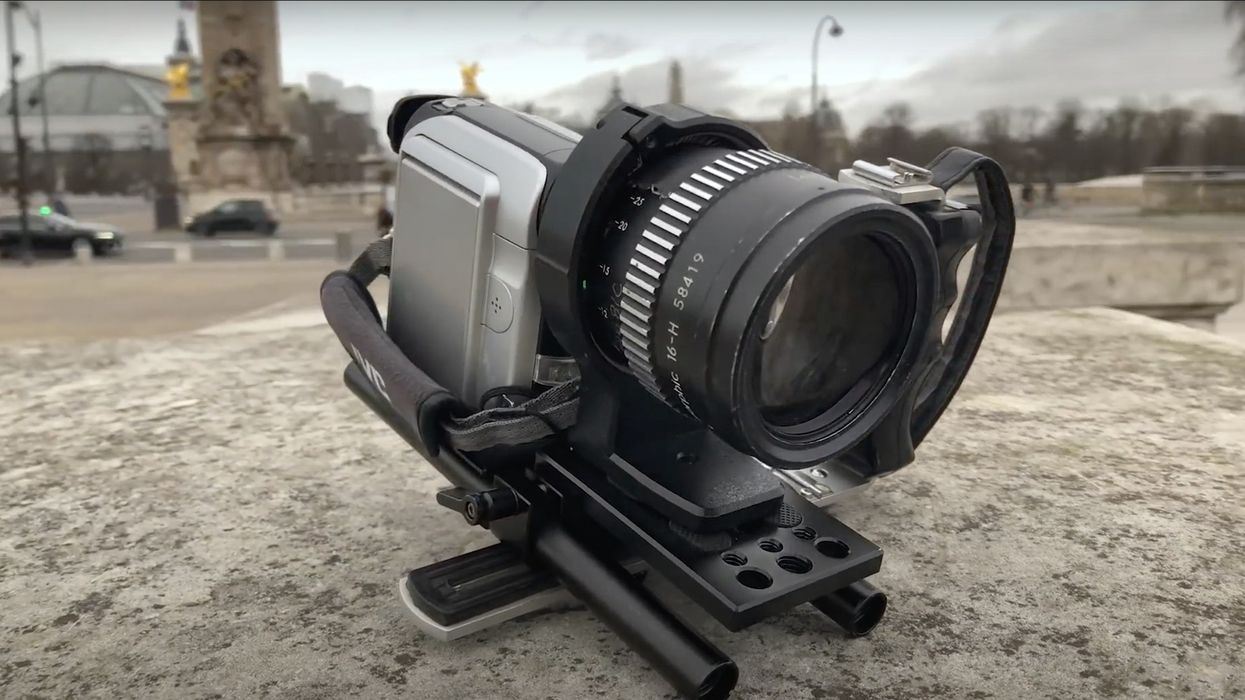Why Filming on a 20-Year Old Camcorder Can Be a Good Idea
Modern cameras have achieved incredible image quality with beautiful color science, high resolution, and superb dynamic range. So why would you shoot on a 20-year-old camera that wasn’t even good for its time?

Let’s talk about aesthetics. The look, the feel. The way an image brings out emotions or feelings of nostalgia.
While modern cameras have become really good at reproducing an image that’s close to real life, a lot of creatives usually start degrading this image before they even turn the camera on.
Cinematographers use diffusion filters on high-resolution cameras, and colorists are always trying to mimic film with the addition of grain and “film look” LUTs in post. The latter usually ends up softening the image to reduce the sharpness of modern cameras.
These changes to an image are all done to create an aesthetic that better conveys the story a filmmaker is trying to tell.
But Mathieu Stern, a photographer and filmmaker from Paris, had an interesting idea. What he got was an image that conveyed a sense of nostalgia that would be hard to reproduce with modern gear.
An In-Camera Aesthetic
Okay, maybe the JVC camcorder from 2004 we're going to talk about isn’t exactly 20 years old at the time of this post, but the title is catchy and will make a lot more sense in 2024. If you’re reading this in 2050, sorry about the whole climate change thing. We hope it’s all better where you are.
Stern’s camcorder records onto mini-DV tapes in SD resolution. It has a built-in lens and a sensor smaller than what’s in your phone. It’s not a great camera.
But by using this camcorder, Stern put that world as he saw it through a time machine.
Seeing the footage shot immediately evokes a certain sense of familial warmth. These types of camcorders were typically used for shooting family events and capturing memories. Viewing the modern world through the lens of the past really does make it seem like a memory.
But Stern didn’t stop there. He combined this ancient relic with a 2x anamorphic adapter, which stretched out the 4:3 aspect ratio into a wider aspect ratio that we are all used to today.
Take a look for yourself:
But… Why?
While Stern’s adventures with the JVC camcorder are nothing more than an experiment, there is storytelling power in the image it produces.
It’s all about aesthetics.
The camcorder Stern used is a byproduct of the late 90s and early 00s. It’s a throwback. Much like how Super 8 produces a nostalgic look from the 60s and 70s, the vintage digital tech from 20 years ago does the same thing, just for a different era.
Yes, there are apps, filters, and plugins that attempt to achieve the same feel of older camera technology, but it is always going to feel different than shooting on the real thing.
For example, if you’re shooting a music video for some new vaporwave band, why not shoot on a JVC camcorder instead of crushing the 4K footage from your new RED or BMPCC into oblivion? You'll be able to tell a much better story with your image.

We recently covered the cameras and lenses used on projects accepted into Sundance 2022. In it, we discussed a project titled Deerwoods Deathtrap by director and DP James P. Gannon. He shot the entire film on a Canon 814 XL-S with Kodak Super8 50D to evoke the feeling of old photos from the ‘70s.
Achieving that sort of aesthetic with a modern digital camera is possible, but is difficult to get just right. Gannon got the effect right in-camera without wasting loads of time in post.
We’re not saying you should throw out your modern gear and start shooting on old relics, but there’s a certain mood that you can only get from old technology. If you’re trying to emulate the past, why not shoot with the past?
Let us know what you think, or which old cameras you would use.
Source: Mathieu Stern












